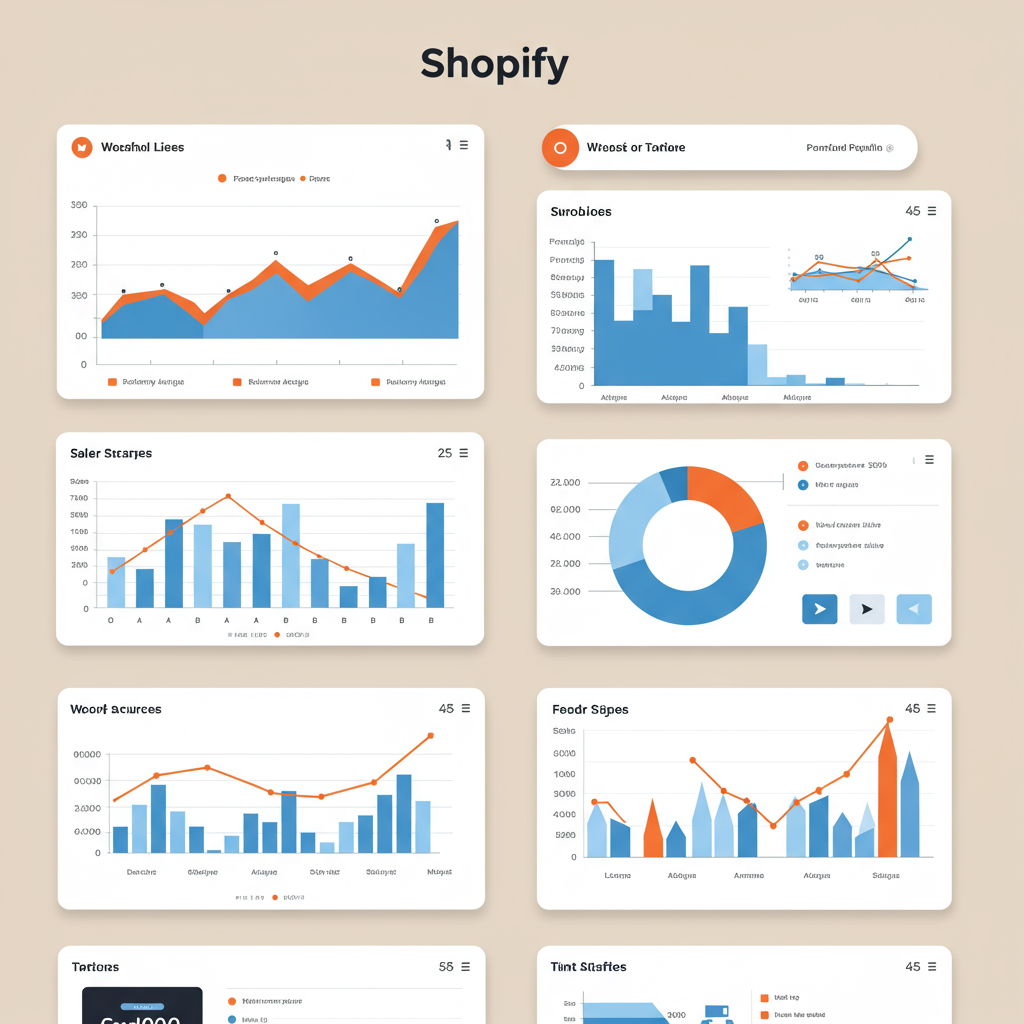My Guide to Understanding and Leveraging Your Shopify Analytics Dashboard for Growth
As a merchant, I know how crucial it is to understand what’s happening in your store. It’s not enough to just make sales; you need to know *why* they’re happening and *how* to get more.
That’s where the Shopify Analytics Dashboard comes in. For me, it’s the nerve center of my online business, providing invaluable insights into performance.
Today, I want to walk you through this powerful tool, explaining its key features and how I use them to make informed decisions for my store.
You’ll find the Analytics section easily accessible from your Shopify admin sidebar. Just click on “Analytics,” and you’ll be greeted with a wealth of data.
The first thing you’ll likely see is the main dashboard, offering a high-level overview of your store’s performance at a glance.
I always start by checking the “Live View.” This real-time snapshot shows me who’s on my site right now, what pages they’re viewing, and even where they’re located.
It’s incredibly useful for monitoring the immediate impact of a new marketing campaign or a flash sale. I can see the traffic surge as it happens.
Beyond the live data, the true power lies in the “Reports” section. This is where I spend most of my time, digging into historical trends and detailed metrics.
Shopify organizes these reports into intuitive categories like Sales, Customers, Online Store, Marketing, and Finance. Let’s explore some of my favorites.
The “Sales” reports are, naturally, a cornerstone. I can see my total sales over any period, track average order value, and monitor conversion rates.
I particularly love the “Sales by product” report. It quickly tells me which products are flying off the virtual shelves and which ones might need a boost.
Understanding “Sales by channel” is also vital for me. It shows whether my sales are coming from my online store, a POS system, or other sales channels I might be using.
Moving on, the “Online Store” reports give me deep insights into my website traffic. I can see total sessions, unique visitors, and bounce rates.
The “Sessions by traffic source” report is a game-changer. It reveals exactly where my visitors are coming from – Google, social media, direct links, or referrals.
This helps me understand which of my marketing efforts are driving the most traffic and where I should allocate my advertising budget.
I also pay close attention to “Sessions by device.” Knowing if most of my customers browse on mobile or desktop helps me optimize my store’s design and user experience.
The “Customers” reports are equally insightful. I can track the number of new customers versus returning customers, which is a key indicator of customer loyalty.
The “Customer lifetime value” report is a personal favorite. It helps me identify my most valuable customers and tailor my retention strategies accordingly.
For marketing, the “Marketing” reports provide a comprehensive overview of my campaign performance. I can see which campaigns are driving sales and traffic.
Shopify’s attribution models help me understand the customer journey, showing me which touchpoints contributed to a sale, even if it wasn’t the last click.
Finally, the “Finance” reports offer a clear picture of my payouts, taxes, and overall financial health within Shopify. It simplifies my accounting process significantly.
What I’ve learned is that these reports aren’t just numbers; they tell a story about my business. They help me identify trends, spot opportunities, and address weaknesses.
For instance, if I see a high bounce rate on a specific landing page, I know I need to optimize its content or design. If a product isn’t selling, I might adjust its price or marketing.
I often export data for deeper analysis in a spreadsheet, especially when I’m looking for very specific correlations or building custom dashboards outside Shopify.
Ultimately, the Shopify Analytics Dashboard empowers me to make data-driven decisions, moving beyond guesswork and towards strategic growth.
It’s an indispensable tool for any merchant serious about scaling their business. I encourage you to explore every corner of it.
What do you think about this article? Did I cover everything you wanted to know about Shopify Analytics?
I believe that by regularly reviewing these insights, you’ll gain a profound understanding of your customers and your market.
This understanding is the foundation for effective marketing, product development, and overall business strategy.
So, dive in, explore your data, and watch your Shopify store thrive!






